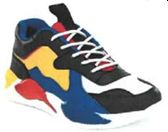- in India
- within Intellectual Property topic(s)
- in India
- with readers working within the Retail & Leisure and Law Firm industries
- within Intellectual Property, Employment and HR and Corporate/Commercial Law topic(s)
- with Inhouse Counsel
The German Federal Court of Justice/ German Bundesgerichtshof was recently tasked to analyse whether the ever-so-popular Birkenstock sandals are a work of art. The Court, however, answered in the negative and refused copyright protection in sandals, as sought by the Birkenstock Group ("Birkenstock"). The increasing fame and trendiness of Birkenstock sandals have only added to the discussions on this landmark ruling. This article aims to review and analyse the decision of the German Court in the Indian context.
Ruling of the German Court
The lawsuit was filed by Birkenstock alleging infringement of copyright subsisting in the design of its sandals, by use of similarly designed sandals by the defendants. In the first instance, the Hamburg District Court sided with Birkenstock and held that their sandals could indeed be protected under the German Copyright Act. However, the decision was reversed in an appeal by the Cologne Higher Regional Court, which was subsequently upheld by the Federal Court of Justice as well.
The Federal Court of Justice essentially held that Birkenstock's sandals are not a work of 'applied art' as protected by copyright. For copyright protection to be granted, the Court observed that creative freedom must be exploited in an artistic manner. However, as the design of Birkenstock's sandals was predetermined by technical requirements and does not reflect the intellectual creation of the author, the Court held that the sandals did not showcase the creator's artistic freedom and choice.
The Court further held that Birkenstock's sandals did not differ artistically from the usual designs of health sandals already known at the time. Birkenstock, in the Court's opinion, did not exploit the existing scope for design in a creative way that reflected the author's personality; rather, the design was primarily oriented towards the result of a product that was particularly 'healthy' for the foot and marketable. Hence, the Court concluded that there was no 'artistic achievement' in the sandals in question and copyright protection was consequently refused.
Indian Perspective on Design vs Copyright
While the intellectual property laws are usually territorial in nature, the adverse ruling in its home country may have far-reaching implications for Birkenstock (and other footwear manufacturers) worldwide. The ruling may likely have a persuasive value in a similar suit in other jurisdictions, particularly where the law is not settled on the point in question.
In India, while 'artistic work' is protected under the Copyright Act, 1957 ('Copyright Act'), 'design' is protected by the Designs Act, 2000 ('Designs Act'). The Copyright Act defines 'artistic work' as paintings, sculptures, drawings, engravings, photographs, or any other work of artistic craftmanship. However, the distinctive features of an item are not covered by the Copyright Ac,t and they are protected by the Designs Act.
As per the Designs Act, the protectable elements of an item include features of shape, configuration, pattern, ornament or composition of lines or colours applied to any article.
To avoid any overlap in protection, the Copyright Act explicitly states that once a design is registered (or is capable of being registered and industrially reproduced more than fifty times by applying on an article) under the Designs Act, then no copyright shall subsist in the said design under the Copyright Act.
Even assuming that certain kinds of footwear fall under the definition of 'artistic work', protection cannot be claimed under the Copyright Act as soon as such design of the footwear is industrially reproduced more than fifty times.
Interestingly, the Supreme Court of India also recently discussed the overlap between 'artistic work' and 'design' and laid down parameters to determine the distinction between the two1. The Court observed that while 'artistic work' qualifies for copyright protection, its commercial or industrial production constitutes 'design' under the Designs Act. The Court clarified that the expression 'artistic work' has a broad spectrum; however, 'design', on the other hand, is restricted to specific features such as shape, configuration, pattern, ornamentation, or composition of lines or colours, applied to an article through an industrial process, resulting in a finished product that appeals to the eye.
The Court also emphasised on the applicability of the 'functional utility' test to determine whether a work qualifies for protection under the Designs Act. As per the 'functional utility' test, if the shape of an article is purely functional, then it stands excluded from protection as a 'design' – for it to be protected as such, it needs to appeal to the eye.
Accordingly, the Court formulated a two-pronged approach to determine the distinction – (i) whether the work in question is purely an 'artistic work' entitled to protection under the Copyright Act or whether it is a 'design' derived from such original artistic work and subjected to an industrial process; and (ii) if such work does not qualify for copyright protection, then the test of 'functional utility' will have to be applied so as to determine its dominant purpose and then ascertain whether it would qualify for design protection under the Design Act.
Protection Available in India in Footwear Design
India is the second largest producer of footwear globally2 and given the sheer size of the footwear sector in India, it is important for the owners to be aware of and prioritise protection of the intellectual property in their footwear as much as (if not more) any other step of production, promotion and sale of those footwear – which also applies to other similar sectors of fashion industry.
With specific regard to footwear, the Courts in India have held that the footwear generally and sandals, in particular, have a design constrain i.e., footwear manufacturers have little "play" in creating new designs3. As novelty is one of the requirements for design protection, the footwear design should be new and original for it to be awarded protection in India. A mere combination of known designs is, however, not considered novel in India.
Considering that the design of footwear is primarily driven by their function, original designs may be challenging to create. That said, in case of any novel design creation, protection should be sought under the Designs Act.
As India is a common law jurisdiction, it also recognises the remedy of passing off. Therefore, even if protection under the Designs Act is not available, a remedy may still be sought for the common law claim of passing off in design. For example, in Relaxo Footwears Limited vs. Nikhil Footwears & Anr.4, an injunction was issued against the Defendant's use of footwear designs similar to that of Plaintiff. In the said case, Plaintiff was successful in establishing infringement of its registered designs as well as passing-off of the un-registered designs.
Similarly, in Puma SE vs. Girish Vohra, owner and proprietor of Girish Enterprises5, the Plaintiff successfully made out a case for passing off of its shoe design by the Defendant. For context, the respective shoe designs are reproduced below in juxtaposition:
|
Plaintiff's Shoes |
Defendant's Shoes |
|
|
|
In addition to the common law remedy, there is also no bar on a design being used/ registered as a trademark. However, as the main purpose of a trademark is to indicate the source/ origin, the threshold of establishing distinctiveness and 'acquired distinctiveness' in a design will be fairly high.
Conclusion
As per an independent survey conducted in 2022, approximately 25-30% of the products available in the Indian market are counterfeits6. This shows the need for the brand owners to be more watchful and seek adequate protection of their intellectual property. While footwear manufacturers may not be able to claim copyright in their footwear designs, they should seek design protection for the same, wherever available.
Given that design protection may not be available if the design of the footwear is not novel and even otherwise, the term of design protection is limited, protection may additionally be sought under common law as well, provided the design in question has acquired adequate reputation. Moreover, trademark rights may also be claimed if it can be proved that the footwear design has acquired a secondary meaning to the extent of it becoming exclusively associated with the brand owner itself and none else.
Footnotes
1. Cryogas Equipment Private Limited vs. Inox India Limited, SLP(C) No. 028062/2024
2. https://pib.gov.in/PressReleasePage.aspx?PRID=2037029
3. Crocs Inc. vs. Bata India Ltd & Ors., (2019) 78 PTC 1
4. CS (COMM) 425/2021
5. CS(COMM) 93/2021, I.A. 2795/2021 & I.A. 12233/2023
The content of this article is intended to provide a general guide to the subject matter. Specialist advice should be sought about your specific circumstances.





